SHRI SHIVAJI SCIENCE COLLEGE, AMRAVATI
DBT STAR COLLEGE PROJECT ACTIVITY
ACTIVITY REPORT
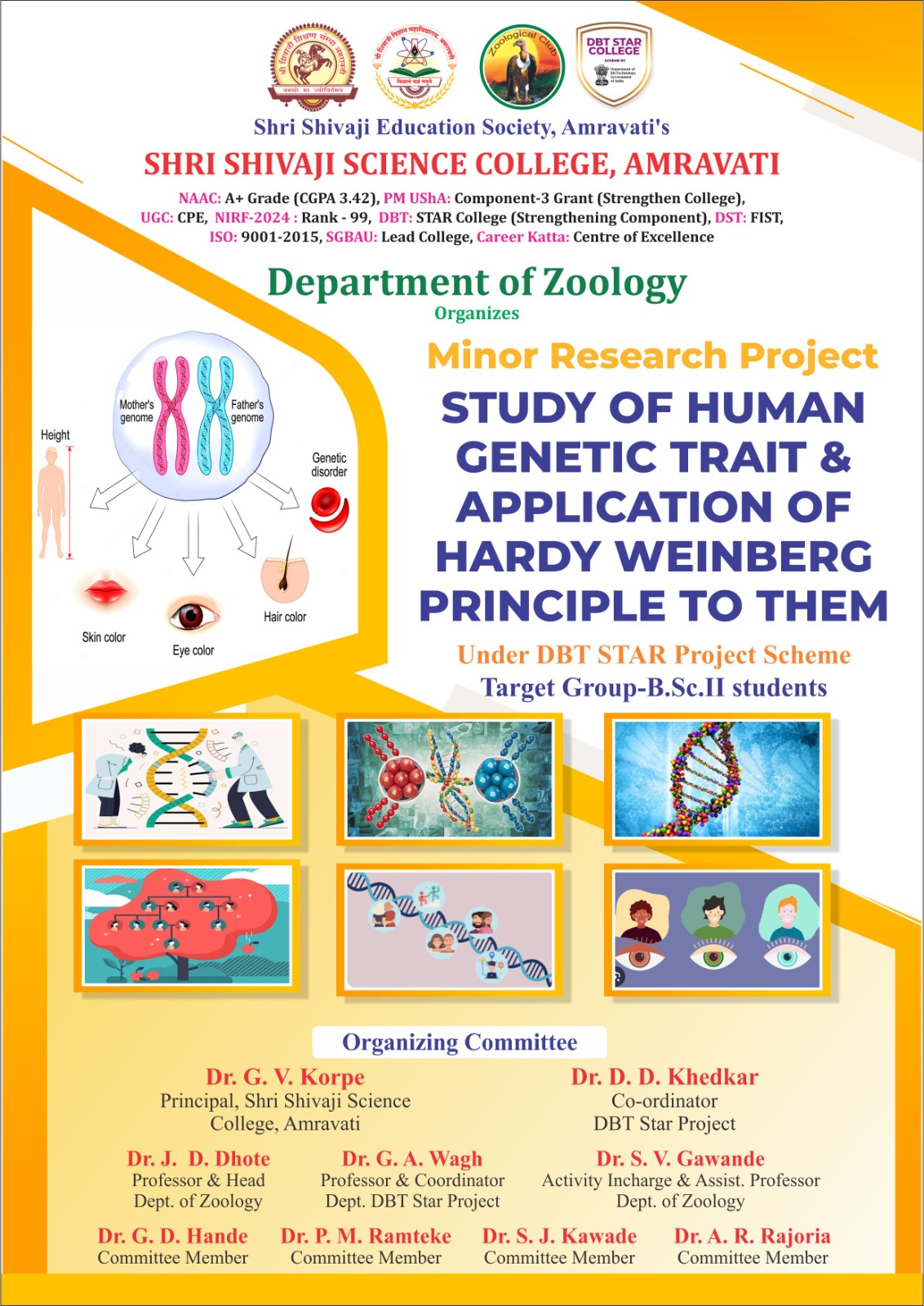
Minor Research Project: "Study of Human Genetic Trait & Application of Hardy Weinberg Principle to them"
Activity Dates: 7th April 2025
Type of Activity: Minor Research Project
Organizing Department: Department of Zoology
Program Coordinators: Dr. J. D. Dhote, Dr. G. A. Wagh, Dr. S. V. Gawande
Head of the Department: Dr. J. D. Dhote
External Collaborator (if any): -
Objectives:
- To provide B.Sc. II year students with hands-on experience in studying human genetic traits and applying the fundamental principles of population genetics, specifically the Hardy-Weinberg equilibrium.
- To introduce students to practical aspects of population genetics.
- To collect and analyse data on human genetic traits.
- To apply the Hardy-Weinberg equation for determining allele frequencies.
- To interpret possible deviations from equilibrium and understand evolutionary influences.
No of Beneficieries: 115
Classes Involved: B.Sc. II Year Students
Venue of the Activity: Department of Zoology, Shri Shivaji Science College, Amravati
Activity Report:
Genetic traits serve as a window into understanding the underlying principles of heredity and population genetics. This Minor Research Project was conducted as part of the curriculum and under the DBT Star College Scheme, aimed at providing hands-on learning opportunities to undergraduate students. The focus of the project was to study the distribution of selected Mendelian traits in a population and apply the Hardy-Weinberg Principle to analyse allele frequencies and genetic equilibrium.
Total 115 students participated in this program. Head of the Department Dr. Jayashree Dhote, Department Coordinator of DBT Star Project Dr. G. A. Wagh, Activity Incharge Dr. S. V. Gawande and other teaching and non-teaching staff were present. At the beginning of this program, Dr. Gawande gave information about Heredity and Variations. After that, Dr. Wagh gave complete information about the importance of Minor research project, features of human genetics and the use of Hardy Weinberg principle for them and told the students how to conduct a survey. After that, Head of the Department Dr. Dhote guided the students on genetics and its importance and study.
Booklets containing relevant information about common human genetic traits (e.g., Earlobe Attachment (Free / Attached), Tongue Rolling (Roller / Non-Roller), Widow’s Peak (Present / Absent), Hitchhiker’s Thumb (Present / Absent), Mid-digital Hair (Present / Absent) etc.) and the principles of Hardy-Weinberg equilibrium were provided to the students.
These booklets likely included:
• Explanation of the selected genetic traits and their inheritance patterns.
• Detailed description of the Hardy-Weinberg principle, including its assumptions and equations (p2+2pq+q2=1 and p+q=1).
• Instructions on how to collect and record data for the chosen traits.
Survey and Data Collection: Survey sheets were distributed to the students. These sheets were designed to facilitate the collection of phenotypic data for the selected human genetic traits within a specific population (likely their classmates, family members, or a defined community). The students were tasked with carefully conducting the survey and accurately recording the observed phenotypes.
Data Analysis and Application of Hardy-Weinberg Principle: Following the data collection phase, the students were expected to:
• Organize and tabulate the collected phenotypic data for each trait.
• Calculate the allele frequencies (p and q) for each trait based on the observed phenotypes.
• Apply the Hardy-Weinberg equations to calculate the expected genotype frequencies under the assumption of equilibrium.
• Compare the observed genotype frequencies with the expected genotype frequencies to assess whether the population under study is in Hardy-Weinberg equilibrium for the selected traits.
• Discuss potential reasons for any observed deviations from Hardy-Weinberg equilibrium (e.g., non-random mating, gene flow, genetic drift, mutation, natural selection).
The Minor Research Project "Study of Human Genetic Trait & Application of Hardy Weinberg Principle to them" appears to have been a successful initiative in providing B.Sc. II year students of Shri Shivaji Science College, Amravati, with practical experience in human genetics and population genetics. The project conducted under the DBT Star Project Scheme and as per the curriculum, likely enhanced the students' understanding of genetic traits, data collection methodologies, and the application of the Hardy-Weinberg principle. The positive feedback regarding the students' performance in the survey suggests effective guidance and student engagement throughout the project.
Outcomes:
- Successfully completed a curriculum-integrated minor research project.
- Understanding of genetic traits: Students gained a deeper understanding of genetic traits and their inheritance patterns.
- Application of Hardy-Weinberg principle: Students learned to apply the Hardy-Weinberg principle to calculate allele frequencies and genotype frequencies.
- Development of research skills: Students developed research skills, including data collection, analysis, and interpretation.
- Established a foundation for further genetics-based investigations and awareness
Photos:
 1. Dr. Gawande gave information to Students about Heredity and Variations |  3. Dr. Dhote guided the students on genetics and its importance and study |
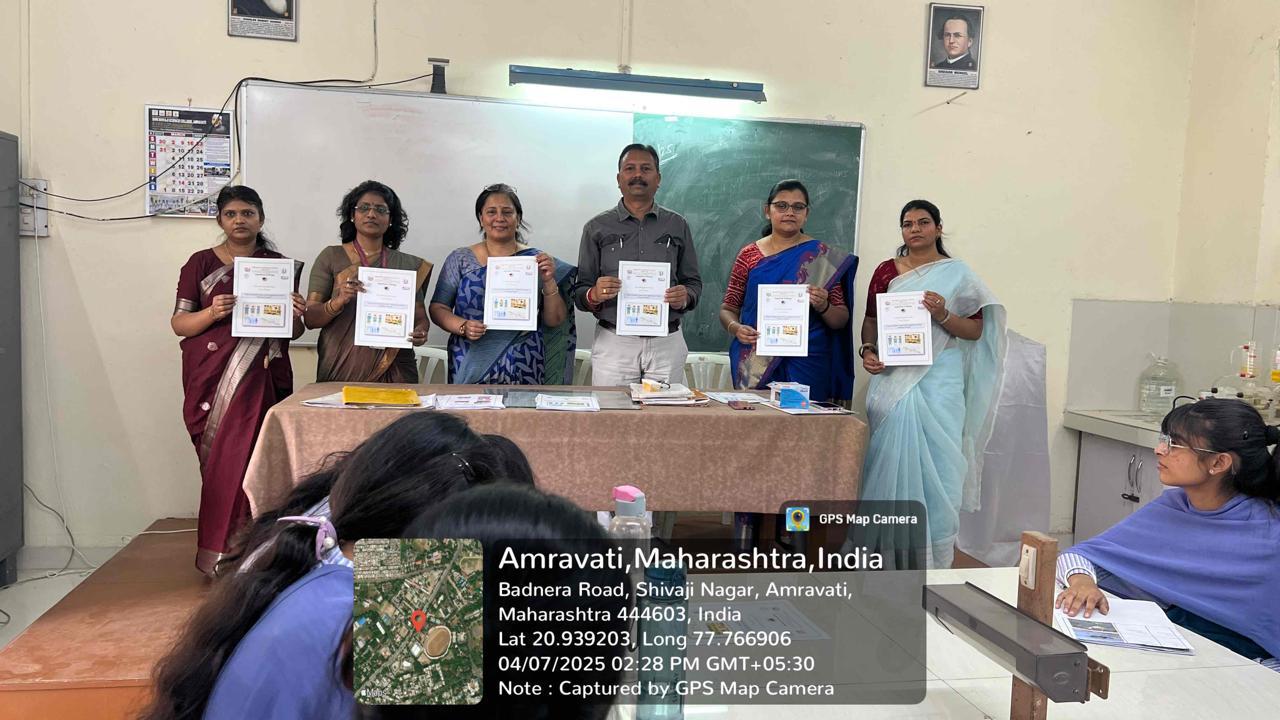 4. Booklet released for Students topic on “Study of Human Genetic trait & application of Hardy Weinberg Principle” | 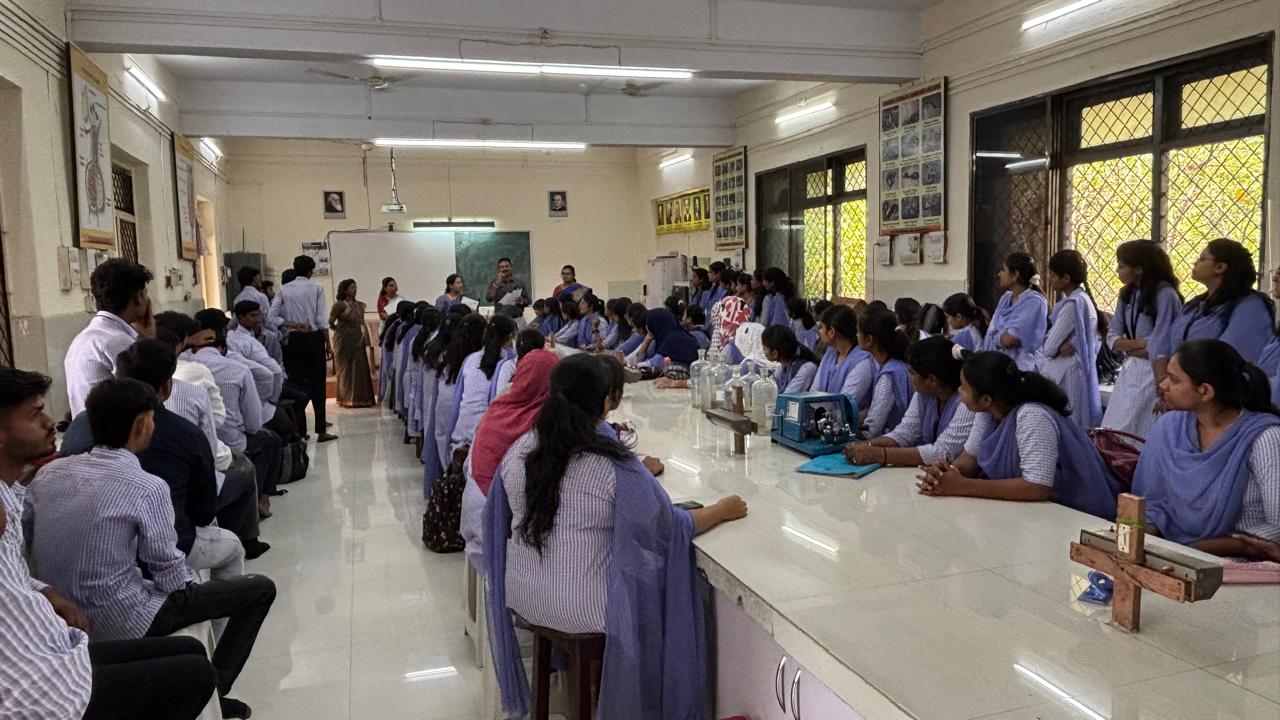 5. For this Activity all Teaching and Non-teaching Staff actively participated |
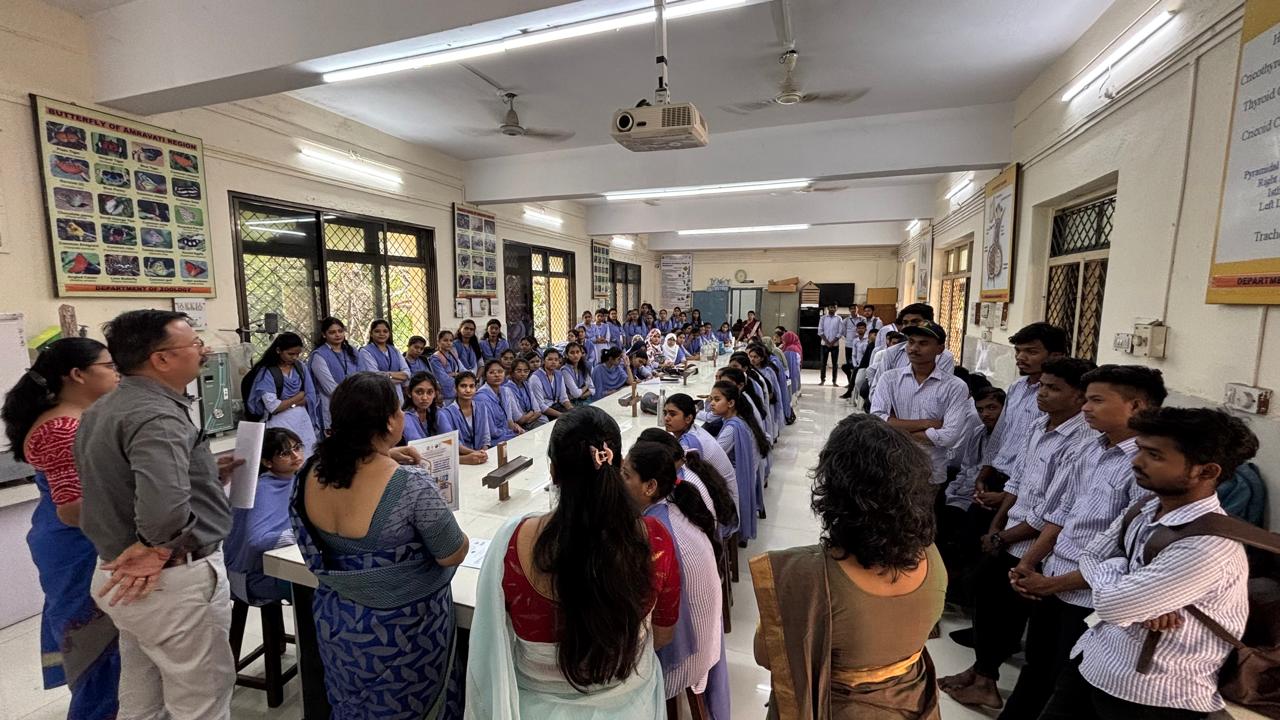 6. Students actively participated in Genetic traits activity |
Attendance Sheet:
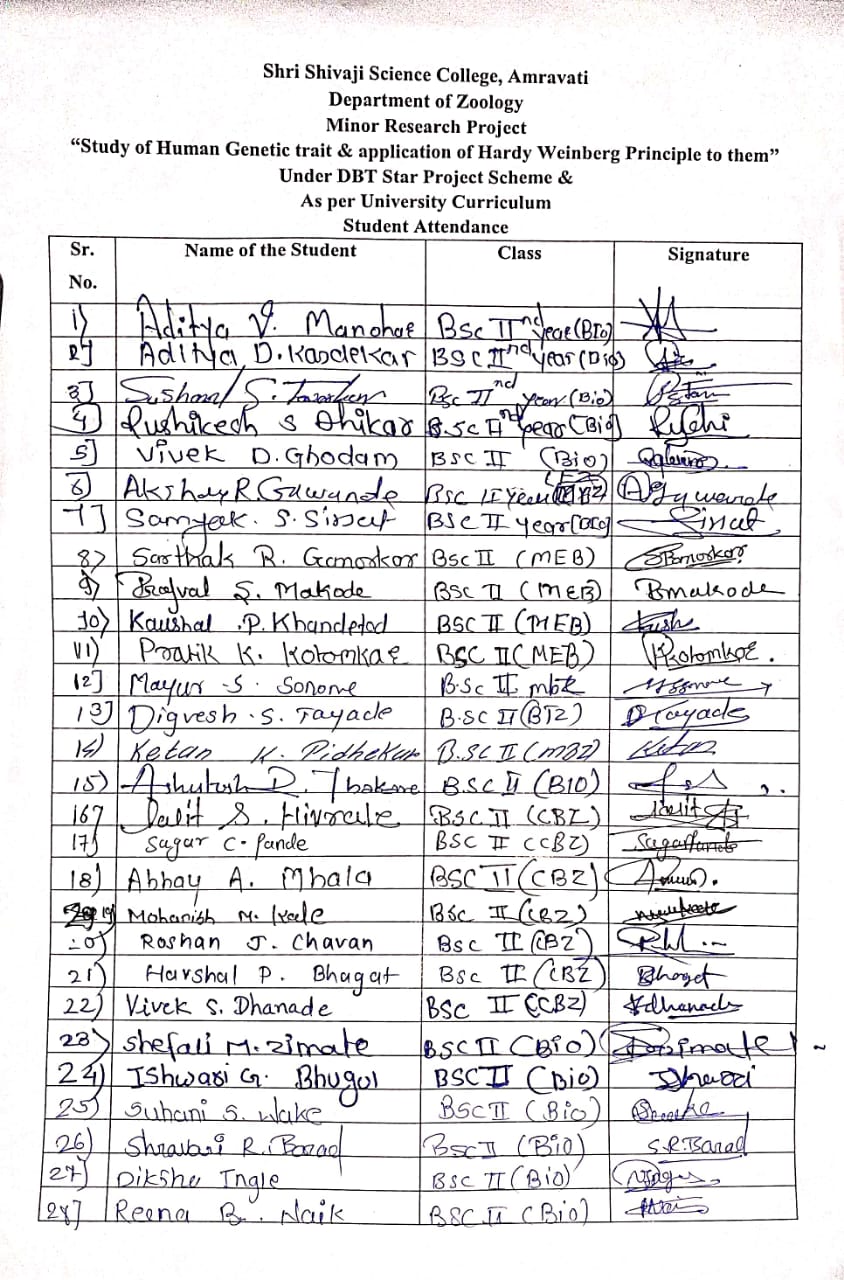 Sheet |
 Sheet |
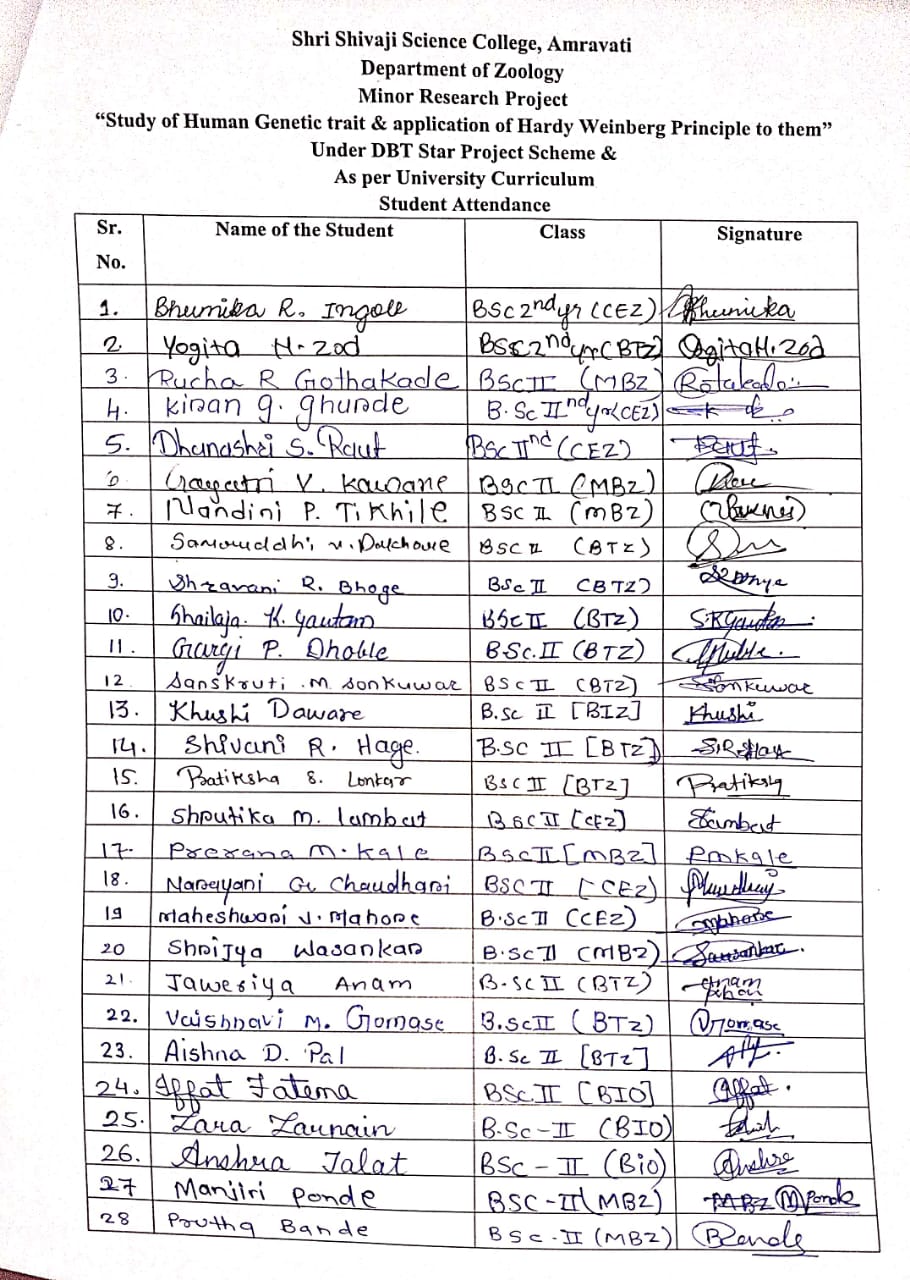 Sheet |
 Sheet |